




OUR BEST EVER OFFER - SAVE £100/$100
JOIN THE WORLD'S LEADING PROFESSIONAL DEVELOPMENT PROGRAMME
- 12 months membership of Elite Soccer
- Print copy of Elite Player & Coach Development
- Print copy of The Training Ground
You are viewing 1 of your 1 free articles
Finding the free player
Do you find that your team has most of the ball yet finds it difficult to break through in the final third? Use this session to get your players retaining possession and finding players in key positions.
| Area | 60x40 yards |
| Equipment | Balls, bibs, poles |
| No. of Players | 12 |
| Session Time | Session 10mins, Development 10mins, Game 25mins |
This session is about retaining possession and finding players in key positions. This concept is important to us because of the way we play – namely that we often have the lion’s share of possession yet find the opposition denying space in the final third.
We work through this session once or twice a week and frequently see the results paying off in matches, particularly when concerted periods of possession succeed in pulling our opponents out of position, enabling a clear route to goal.
What do I get the players to do?
We begin with a centre circle drill involving 12 players. Two start in the middle with everyone else on the outside facing in. Two balls, on opposite sides of the circle, are passed in. The player who passes follows the ball, then the receiving player does likewise, passing clockwise to the next man outside the circle (1a).
1a

We then add poles within the circle to create obstacles, encouraging players to take a touch to make space (1b). And we’ll change the direction of play every couple of minutes.
1b
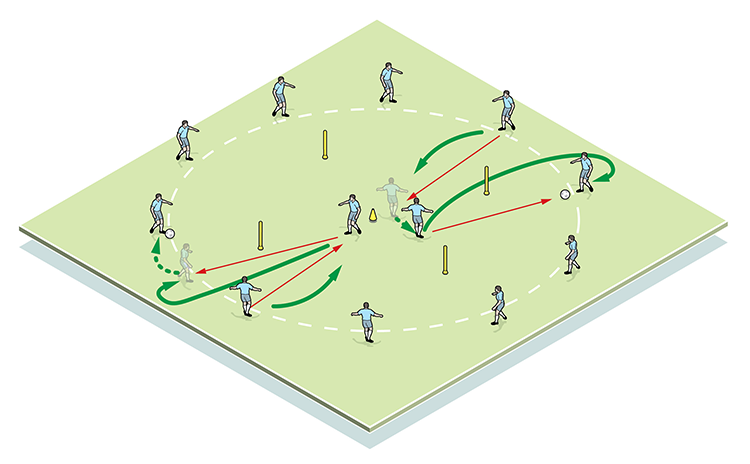
For the main session, there are 12 players in a 60x40-yard area. Inside we place a circle measuring 10 yards across that only attackers can enter. This is an 8v4 game where overloaded defenders must prevent attackers from threading a pass to a team mate inside the circle (2a).
2a
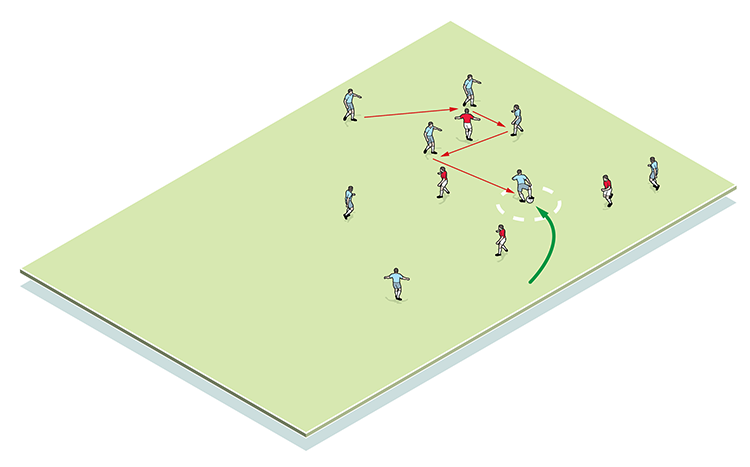
Attackers score two points for a received pass, and to prevent defenders from just shielding the circle, also score a point by making six consecutive passes anywhere in the area (2b). Defenders score a point by winning possession. Play restarts after every point scored and we play this in three-minute sets before rotating defenders. We do three sets then rest.
2b
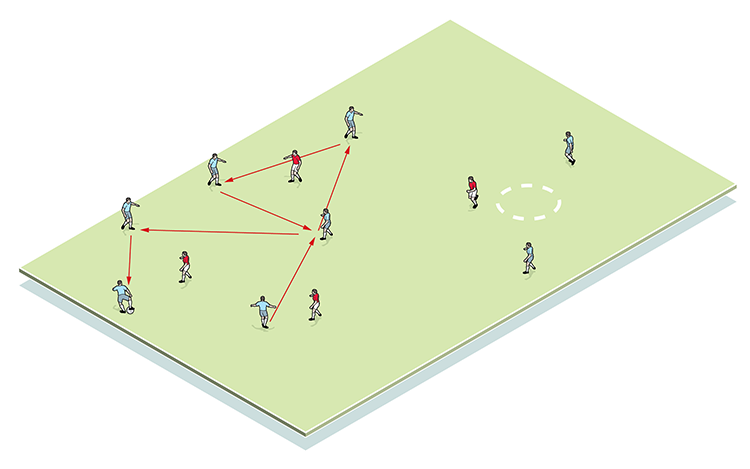
What are the key things to look for technically/tactically?
Attackers must move the ball quickly and stretch the defending team, always with the aim of playing into the circle. They must show good judgement of when to pass safe and when to risk a ball into the circle. Defenders must communicate and cover space quickly and effectively.
How do I progress the session?
Reducing the size of the circle or adding a second circle elsewhere in the area increases difficulty for defenders (3).
3
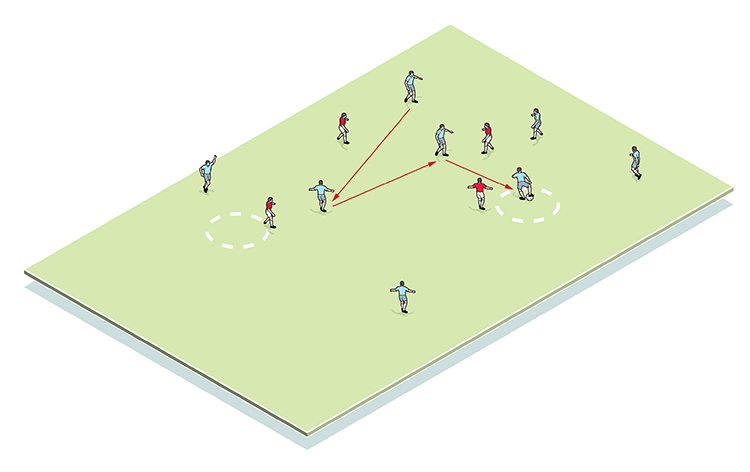
To offer a new option for attackers, we swap the circles for a thin line across the area, five yards wide. All players can cross the line but only attackers can wait in it. Here, attackers are looking at a width rather than a focused target (4). This is done to make the practice as match-realistic as possible.
4
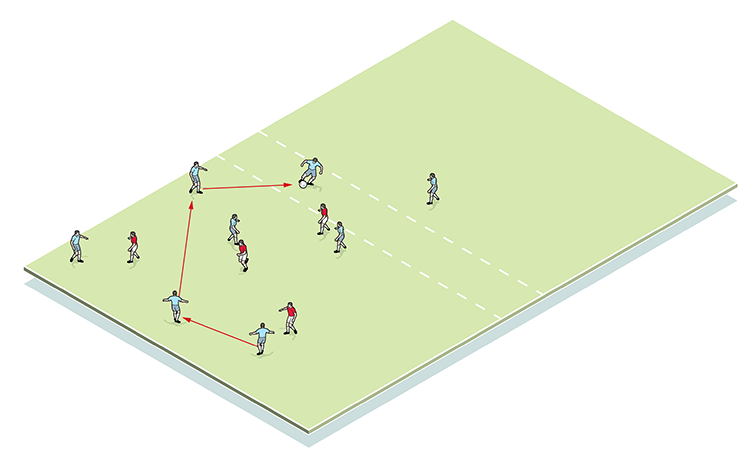
Related Files
Editor's Picks
Attacking transitions
Deep runs in the final third
Using the goalkeeper in build-up play
Intensive boxes drill with goals
Penetrating the final third
Creating and finishing
My philosophy
Pressing initiation
Compact team movement
Coaches' Testimonials

Alan Pardew

Arsène Wenger

Brendan Rodgers

Carlos Carvalhal

José Mourinho

Jürgen Klopp

Pep Guardiola

Roy Hodgson

Sir Alex Ferguson

Steven Gerrard
Coaches' Testimonials

Gerald Kearney, Downtown Las Vegas Soccer Club

Paul Butler, Florida, USA

Rick Shields, Springboro, USA

Tony Green, Pierrefonds Titans, Quebec, Canada
Join the world's leading coaches and managers and discover for yourself one of the best kept secrets in coaching. No other training tool on the planet is written or read by the calibre of names you’ll find in Elite Soccer.
In a recent survey 92% of subscribers said Elite Soccer makes them more confident, 89% said it makes them a more effective coach and 91% said it makes them more inspired.
Get Monthly Inspiration
All the latest techniques and approaches
Since 2010 Elite Soccer has given subscribers exclusive insight into the training ground practices of the world’s best coaches. Published in partnership with the League Managers Association we have unparalleled access to the leading lights in the English leagues, as well as a host of international managers.
Elite Soccer exclusively features sessions written by the coaches themselves. There are no observed sessions and no sessions “in the style of”, just first-hand advice delivered direct to you from the coach.








